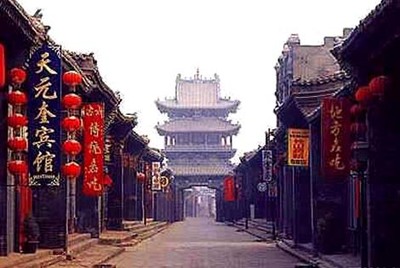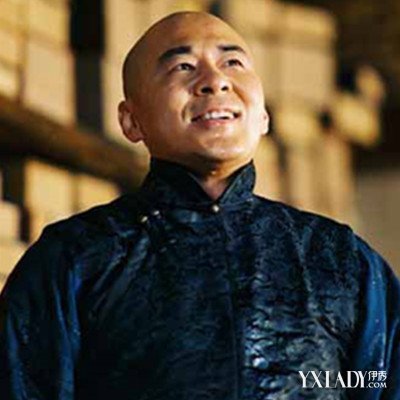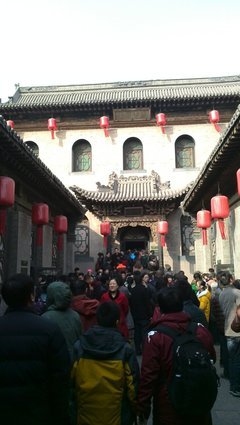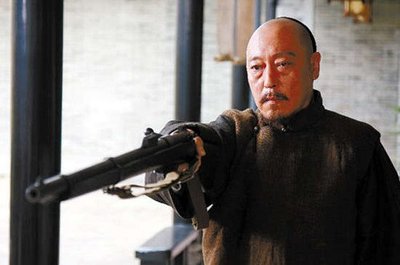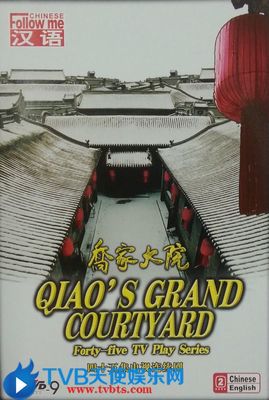ladies and gentleman,good morning!welcome to shanxi!its my greathonour to stand here to be your tour guide,please allow meintroduce myself, my name is z,u can call me Doris too.the man whositting beside me is our driver Mr li ,he has more than ten year’sexperience in driving so he will makes our trip a safe and pleasantone .we will do our best to make your tourpleasant and enjoyable .
山西素有“中国古代建筑博物馆”之称。全省现存有大量明清时期的民居建筑,它们大都集中在晋中的祁县、平遥、太谷、介休一带,这些深宅大院不仅是当时富商大贾的宅第,也是显赫一时的晋商的历史见证。那我们今天参观的乔家大院就是它们其中的一个代表。
shanxi has long been known as "ancient architecture museum ofchina". A great many civil houses build in Ming and Qing Dynastieshave been preserved in here.they are the testimony of history ofShanxi Merchants .the Courtyard of Family Qiao that we will visittoday is one of them.
乔家大院位于祁县东观镇乔家堡村,距太原54公里,乘车大约一小时就可以到达。乔家大院是一所民居建筑,是我国保存下来的最完整的一座民居建筑。占地8725㎡,建筑面积3870㎡,共6个大院,20个小院,313间房屋。1985年乔家大院被开辟成为晋中民俗博物馆,一部《大红灯笼高高 挂》使得乔家大院名扬海外,2005年拍摄的《乔家大院》更是让许多人了解了乔家大院,了解了晋商。我们现在就来到了乔家大院的大门口了,我们现少停留一下。
Courtyard of Family Qiao located in Qixian County in ShanxiProvince , 54 km south of Taiyuan.this is a kind of civil house ,itis the most complete civil house which is preserved in china.itoccupying area of 8725 square meters,while the floorage occupies3870 square meters.it has 6 compounds, 20 small courtyards, 313housings.
我们看到乔家大院的门前并没有旗杆和石狮子,但是高大的院墙,足以显示出主人的威严气派。院内房屋设计的十分完美,错落有致,体现了我国清代北方民居建筑的独特风格,具有相当高的观赏、科研和历史价值。专家学者赞誉其为“北方民居建筑的一颗明珠”。因此人们常说“皇家有故宫,民家看乔家”。我们看到大门正对的这个照壁,它叫做“百寿图”是由一百个寿字构成的,在百寿图的两边有一幅对联“损人欲以覆天理,续道德而能文章”这是当时左宗棠写的,他先了主人淡泊心志,,百寿图的上方有“履和”二字,是从“端详步履由中道,怡然胸襟养太和”一句中意化出来的,体现了乔家主人的中庸思想。
there isnt any flagpole or stone lions outside the gate,but thosetall walls could shows the prestige of the owner.houses in thisyard was designed quite naturallyperfect,it shows the characteristic style of the civil houses innorth .its highly valuable in the study of history,in scientificresearches,it is also valuable as a tourist resort.The specialistsand scholars commend it as "a bright pearl of the civil houses innorth".there is a screen wall facing the gate of a house,we calledthis "zhaobi",we can see it consisting of hundred forms of thecharacter for “shòu” ,it means longevity.
大门上有一副对联“子孙贤,族将大”;“兄弟睦,家之肥”,可以看出乔家主人的最高追求,就是人丁兴旺,家庭和睦,只是致富的前提,也是富贵的归宿。进入大门后我们首先来看一下大院的简单构造图,我们面前的这条常80米的甬道,将乔家大院的六个大院分为南北两院,北院房屋大都高大,是长辈居住的地方,南面的房屋相对较低是晚辈居住的地方,大门是朝东开的,所谓“紫气东来”这个大门就是吸收祥气的。那我门一个大院一个大院来参观。
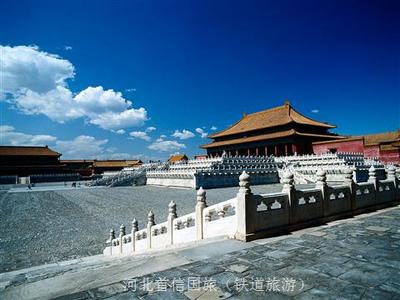
after we entry the front gate, we see the map first,there are 6compounds in total.the houses in northern yard was tall,its theresidence of elders.relatively low houses in south lived theyounger generation.
【第一院】
整个乔家大院比国内不是一期工程一起完工的,而是分为了三期工程,那我们要看的第一院就是清嘉庆至道光年间,是一期工程的第一院,称为老院,它是由乔贵发之子,乔致庸之父乔全美所建。
the first courtyard was build during the Reign of Jia Qing and DaoGuang.its the old yard .
进入大门,我们会看到一个照壁,叫做福德祠,那正是印证了“门迎百寿,院纳福德”。一般民宅中都要有,它的用途就是一、装饰作用,二、镇宅避嫌的作用。
we will see a entrance screen ,zhaobi,after we entry the gate ofthis yard . i mentioned it before.it useful for two purposes,one isfor decoration,another is for guards the house and avoidsuspicion.
这里的福德祠是用来供奉土地爷的,大家看到下面有一个小龛,正是摆放土地爷的,此外,在整个照壁上还有许多精美的砖雕,我们来看,上面,两边各有一对狮子,那它的谐音就是“四时平安”,中间有几件法器戟、磬、如意,寓意为“吉庆如意”,下边有寿山石,寓意为“寿比南山”,旁边的芙蓉树,寓意为“福如东海”,我们数一数,一共有六对鹿,寓意为“六时通顺”。好了我们要进院去参观了,那这个院子是一个里五外三的穿心楼院,我们要连登三级台阶,高约为1丈,寓意为步步登高的吉祥祝福。
this screen was used to dedicated to the "earth god".there is asmall niche below,was used to set the "earth god".there is a lot ofexquisite brick carving on the screen.
好我们来到了第一进院,这里展出的是行和住的民俗。我们来看这个厢房中有两辆马车,车轮十分的高大,这正是富贵人家的马车。对面是居住民俗,展出的是从古人类一直到现在的居住地图片。
there are still two yards in the first conrtyard.now,we areentrying the firt one,this yard shows the folklore of "live"and"row". the two carriages displayed in wing room is very big ,onlythose rich people who can own this kind of stuff.
穿过穿心,我们来到了第二进院,我们看到,正房是一个二层的小楼,可是二楼是有窗没有门,那这叫做统楼,上方有一块牌匾“为善最乐”,这正是乔家老爷的座右铭,那以前正房是用来会客的,东西厢房是书房和卧室,我们今天来到乔家,就是乔家的客人,所以我们先来正房看看,我们会发现现在是冬季,但进入房间并不会感觉到冷,我们会看到墙壁非常的厚,厚大约为1.2米,那这是仿照过去的窑洞而作的,所以是冬暖夏凉。
now ,we are stand in the second yard ,we can see the main house isa two-story building ,but there isnt any windows or doors on secondfloor,this is a special style in china.the board above means thehappiest thing is to be goodness . the main room was used forrecept guests.today,we are mr qiao's quests,so lets go to the mainroom first. u wont feel cold in this room in winter,because thewall in this room are relatively thick ,its nearly 1.2 meters ,thisroom is patterned after past cave,its warm in winter and cold insummer.
东厢房展出的是岁时节令,上半年的从二月二龙抬头,四月清明节,扫墓,五月端午,下半年从七月十五上坟,八月十五赏月,腊八喝腊八粥,二十三送灶王爷上天,二十四买对子,二十五扫房子,二十六打烧酒割肉,二十七杀猪又杀鸡,一直到大年三十。
the east wing displayed festivals and holidays. it shows thetroditional festival of china and their correspondingcustoms,spiritual religion and amusement.Tomb-sweeping Day ,DragonBoat Festival,spring festival.
西厢房展出的是衣饰,那以前是有这种观念“男人看袖头,女人看脚手”袖口越大,说明这个家越有钱,而女人则是越是脚小的越好看,有这么一句话“三寸金莲,四寸银莲,五寸铜莲”脚大了就嫁不出去了,那我们看到这里还有两双很小的鞋,它并不是三寸金莲,是双看鞋,那它是用来送给别人的,就是要看这个女子的手是不是很巧。
the west wing displayed clothes and ornaments,there is an oldsaying,"judge a man from his cuff,judge a women from her foots andhands". bigger the cuff ,richer the family .and to women,a girlwill be well recived if she had a very small foots.if she had a bigfoot,she need to worry about that she will never get married.
偏房是农俗展览,有碾子、石磨,还有一些春种、夏管、秋收、冬藏的农事活动。
the side room is the exhibition of agriculture ,there areroller,uesd for crush grain,and stone mill,used for grinding graininto flour,and there are some exhibition of farming activities inthere too.
【第二院】
第二院是二期工程,那在第二院所展出的就是乔家的发迹史。我们来进来看一下,乔家的发家始祖乔贵发,名字是很好的,贵发贵发,既富贵又发达,可是他却是命运不济,很小的时候就父母双亡,他被寄养在舅父家里,那他却是一个十分勤劳有踏实的人,亲戚邻里有什么事情,他都乐意去帮忙。有一天,他的亲戚结婚,他还是照旧去帮忙,等到新人行礼的时候,新娘新郎要找乔贵发来行礼,后边的人就说“给那样的人行礼,还怕有失身份呢”这时乔贵发刚从厨房赶过来,满身灰尘,听到这句话后,心想,我堂堂一个五尺男儿,只因家里贫穷,就让别人这么看不起,一咬牙,一跺脚,独自走了西口,开始了自己的发家之路。他与清徐的一个姓秦的小伙子,一起在一个杂货铺打工,由于他们的勤快和好学,受到了老板的赏识,教会了他们很多的经商之道。后来,他们有了一些积蓄,就自己开了一个草料铺,有一年,是个丰收年,粮价跌落,黄豆价格尤其低,他们便趁机购存大批黄豆。不料,次年黄豆紧缺,价钱不断上涨,他们便将黄豆抛售出去,获利颇丰。于是利用这笔资金,开设字号,名为广盛公。后来因为管理的滞后,有些亏损,经过三年的整改,终于有了新的起色,当时把“广盛公”改名为“复盛公”,他们认为这是复兴基业的新起点。我们看到下一位人物就是乔贵发的儿子乔全美,如果说,乔贵发是乔家的开创者,那他就是一个发展者,他为乔家制定了一系列的家规家训,一会儿我们去看看。那乔全美有两个儿子,大儿子乔致广英年早逝,二儿子致庸继承家业,我们看这幅图,这位就是乔致庸,在他的手上,乔家度过了最辉煌的时期。他是乔家最年长的人,活了89岁,一共娶了六个太太,最小的一个可能可以作他的孙女了,大家可能会问,乔家不是有很严格的家训吗,怎么会娶6位太太呢?他活了89岁,老了如果总是让女仆伺候生活起居,那样不是很方便,所以儿女让他娶妻,但从不纳妾。当时乔家的生意遍布整个包头城,那有这么一句话叫“先有复盛公,后有包头城”。
the second courtyard displayd the family history.Qiaoguifa was theearliest ancestor wo make the family get rich,he was ill-fated whenhe was young.his parents died when he was little boy.He was send tohis uncle's home as a child.he is a hard-working and steady.so manypeople looked down on him just because his poverty.so he decided"zou xikou",it means went to work in Inner Mongolia.he saved somemoney by means of worked for a varietyshop,and invested his own store.this became the beginning of hisfamily business.his son,Qiaguangmei has formulated a series offamily rules.Qiaoguangmei had two sons,eldest son died earlier.andhis young boy Qiaozhiyong inherited his family property and made agreater achievements .moreover he is the oldest man in his family,living 89 years old.he has six wifes ,the youngest one could behis granddaughter.his business spread through central innermongolia.
那后面的这意味是乔致庸的侄孙乔映霞,他当时是出外留学,把先进的技术带回到乔家,当时乔致庸认为自己的儿子没有很好的人选,所以就将乔家交给了他。但是俗话说“富,富不过三代,而乔家已经是五代经商了,1926年开始走下坡路,由盛转衰。票号与商号业务多被官商银行夺走,日军侵华战争及国内连年战乱,也使商号一獗不振,惨淡经营直到1951年终于停业,1952年遣散职员处理善后,1953年春,历时二百多年曾经辉煌一时的“复字号”终于关门了。
as the old saying, Clogs to clogs is only three generations.atlast, Qiaozhiyong gived the family possessions to his grandnephewwho had been aborad . but , their business begun to went downhillat 1926 cause the war.the business had been shutdown at 1953finally. most of their later generation lived in beijing ,shanghai,kunming now.
那我们来看他们的家谱图,上面的已经介绍过了,乔贵发三个儿子乔全美、乔全德、乔全义,乔全美有两个儿子,乔致广、乔致庸,乔致庸有11个儿子,下面的是他的孙子,那大家看下面有一个叫做乔健的人,乔家就是在他这辈分家的,下面的子孙大家会看到很少有在山西的,当年,乔家的后人很少有人再子承父业的,大部分都离家上学。现乔家后人大部分都生活在北京、上海、昆明等地。
【第三院】
第三院为三宝院,我们来一件一件看,从正房看起,正房内的叫做犀牛望月镜,他是用东南亚铁梨木雕刻而成的,平时我们所见的木头都是密度小于水的,所以放在水里会漂浮起来,而东南亚铁梨木的密度则很大,它会沉在水底,两百年来,镜子影像清晰,结构完美。大家看,它分为三部分,上面是镜面,它像天上圆圆的月亮,然后是祥云,最后是一头犀牛,这里还有一个传说故事,传说犀牛是天上的一个神将,玉皇大帝让它来到人间传令,每天人们应三打扮,一吃饭。它却传成了一打扮,三吃饭,玉皇大帝大怒,将它贬到人间,由于留恋天上的生活,所以他的头总是朝向天上望着月亮,所以叫做犀牛望月,此外,犀牛还与喜牛谐音,也取一个吉祥的寓意。据文物专家鉴定,此镜最低价也值300万人民币。
there are three treasures in the third courtyard.lets see it oneafter another.also, we start with the main room.the precious inthis room is called "the mirror of Rhinoceros Watching theMoon",its carved out of lignumvitae,the general woods will floatbecause it is less dense than water.but this will sink towards thebottom,it has gone through over two hundred years , but its imageis still perfect.
东厢房中展出的事第二件宝物,叫做“万人球”,,这是个圆球形的镜子,无论有多少人在房中,也无论站在哪个角度,都可以在镜子里找到自己,而且映像十分清晰,不会变形,所以叫做万人球。那它当时是有一个重要的用途的,对,起监视的作用,当时乔老爷把它挂在正房的窗外,老爷经常会与掌柜的商讨商业事宜,这正是起到一个监视的作用,防止有人在外面偷听。万人球确实是名不虚传,此物是清代的遗物。
the east wing displayed a very special ball, in fact its aspherical mirror,but the most spectacular is whatever how manypeople stand in this room and wherever you are,u will find urselfin that ball,quite clear and not to deform. its was used for spy atthat time,when mr Qiao was discussed important business ,it canprevent eavesdropping .if u dont believe it ,just try it~~
第三宝就是悬吊在西厢房的这两盏“九龙灯”。九龙灯是用珍贵的乌木制作的一对八角形宫灯。因为灯上共雕有九条龙,故称“九龙灯”。这9条龙分上下两层排列,上4条,下4条,每4条组成一个万字,灯的顶端有是1条龙头,9条龙头上都有蜡签可点蜡烛。每4条精雕细刻的龙身所组成的万字形,在其转折处都有轴相连,可以灵活转动调整角度。在两层万字形中间的是八棱形灯身,上有4面画、4面水银镜子可反光照射。到了晚上,棱形灯内的烛光交相辉映、流光溢彩。如果还要增加房间的亮度,那就把九龙灯上两个万字形拉直,8条龙便照直地向四方扑去,使得房间大亮。据说,这对九龙灯是当年慈禧太后西逃时赐给乔家的,北京故宫博物院前些年几次有意收走,但乔家大院管理部门不肯割爱,只好作罢。
the third precious which is kept in here is a light with ninedragons.its made by ebony and having eight sides and eightangles.this a special gift given by the Empress Dowager Cixi whenshe was escaping.the Palace Museum in Beijing wanne took awayseveral times,but had been rejected finally.
【第四院】
我们现在来到的就是第四院,商俗院,也是新院,它是由乔致庸的侄孙乔映霞所见的,那这个院子在建筑风格上处处体现出了他留学所带来的先进技术。首先我们来看正房的窗户,非常有欧式的风格,此外这里还有很精美的砖雕,我们看门楣上方的砖雕,正中是一个香炉,上面还坐了一个小孩,寓意为香火旺盛,两边分别是琴棋书画,乔家人希望自己的子孙是多才多艺,琴棋书画样样精通的;再往两边看,分别是钟和表,教育乔家的后代子孙套懂得一寸光阴,一寸金,要珍稀时间;我们再看东厢房这边有一个很有意思的雕刻,大家顺着我的手势看,中间的小的玻璃窗户格子上方,有一列火车正在桥上行驶,还冒着烟,正是乔映霞当年把在外国看到的火车凭借自己的印像雕刻到这里。
now,we are in the forth courtyard,displayed the commerce and custom.this yard founded by Qiaozhiyong's grandnephew.all in thesignature of new technology brought from abroad.the window of themainroom, it is European Style , moreover,there are many exquisitebrick .the brick on the transom shows a censer and a boy sit onit.The moral to it is to have plenty of offspring,there arelyre-playing, chess, calligraphy and painting carved on beside ,that means he hope his later generation are thoroughly accomplishedin all of them.we can also see the brick of bell and watch.it usedfor educated his offspring that treasuring the life time .
正房的蜡像就是当时掌柜和东家报账的情景,正面坐的是东家,旁边坐的是掌柜的,而后面的就是小伙计了,那乔家乃至晋商当时选用小伙计是非常严格的,首先必须面貌清秀,身高七尺,并且是本村的村民,因为这样知根知底;其次就是他人品和技能的考察,必须通过严格的考察,才能被录用。偏房里都是从当地收购回来的家具,我们来看这个小瓷娃娃,它是一个枕头,我们看到它后面有一个小孔,那这是用来灌水的,冬天灌凉水,夏天灌热水,冬暖夏凉。从偏房出来,我们看到这个门楣上也有些木雕,大家可以看到两颗白菜,谐音为“百财”,出了偏院,我们来看这个砖雕,一面是猫和蝴蝶,谐音“耄耋”,另一面是喜鹊登梅,寓意为“喜上眉梢”,然后我们来看这个院子的照壁,它叫做“省分箴”,它是乔致庸的妹夫赵铁山所写,省是醒悟的意思,分是分寸的意思,教育乔家后代做事要注意分寸,并要懂得知足。两边是暗八仙,也就是八仙的法器,下面有戟、罄、如意,“吉庆如意”,最下面两边是狮子滚绣球,俗话说“狮子滚绣球,好事在后头”,那我们也马上要看到,乔家大院最为漂亮的院子。
now lets go inside the main room,there is a waxwork in here,Itdepicts the scene of shopkeeper account for his master.the boystanding behind him is a buster,the selection of buster was overlystrict in here,first the boy should be handsome,seven feet tall atleast,and he should be a villager of their native village.second,they were thoroughly vetted before they were allowed intothis house.
the side rooms displayed many furnitures which were purchased fromlocal residents.there is a china doll here,this is a pillowactually , there is a ostiole on the back,u can filling it with hotwater in winter,cold water in summer.
【第五院】
第五院就是乔家大院“在中堂”的主人乔致庸所建,它也是一个里五外三的穿心楼院,首先我们看到门楣上方,有一块匾,叫做在中堂,取意为“不偏不倚,执用之中”体现了主人的中庸思想,门楣上雕刻有福禄寿三星,两边有八骏的雕刻,希望后代子孙都有所作为,这一院展出的是人生礼仪,我们来看第一进院,里面展出的是小孩过一周岁生日的情景,不仅要全家庆贺,还要举行抓周仪式,全国不少地区均有此俗,古典文学名著《红楼梦》中也有描写,贾宝玉抓周,其他东西不抓,偏偏抓了脂粉盒。生日这天,吃的也很讲究,一般都吃长寿面,希望孩子健康长寿,还要吃油糕,取谐音高低的高,希望孩子今后的日子芝麻开花节节高。过生日最大的忌讳是吃包子,怕孩子长大之后像草包一样活的窝窝囊囊。此外,大家可以看到墙上挂一件衣服,称为百家衣,这是小孩母亲从各家要回布料缝制的,穿百家衣,以期望小孩健康成长,无灾无病。
the fifth courtyard was build by Qiaozhiyong,this yard displayedlife etiquette,lets see the first small yard ,it shows the scene ofa child on his one year old birthday,everyone come to congratulatethis little boy.there will be a formal ceremony ,a vocationalinclination test for an infant.people will prepare many thingsrepresent many kinds of vocation for the child,and then let himgrabing,the thing he finally grabed willrepresent the one he will be in the future .such as ,a abacusrepresent he will go into business,a pen represent he will be acalligrapher in the future.very interesting. the child will eatlongevity noodles in his birthday,it was taboo to eat steamedstuffed bun,cause they think its not good for the child's futurelife.
穿过穿心院,我们来到里院,首先我们来看,它是一个明楼院,二楼是有门有窗的,相对于第一院来说,它的建筑结构与风格,就十分的讲究与先进了。里院展出的是婚俗,男大当婚,女大当嫁,在晋中结婚一般分为6个程序,我们一个一个地看,请大家跟好我的脚步。迎娶这天,新娘早早起来和父母去祠堂上香,然后坐在炕上等待梳妆打扮,这天的新娘从头到脚都是一派红色,必须穿红棉袄、红棉裤,红色代表喜庆、吉祥。民间当时有“十三留头,十四嫁,十五生个毛娃娃”的说法。因为过去女孩出嫁年龄尚小,长得比较瘦,为了衬托像大人一样丰满,所以要穿红棉袄、红棉裤,另外就是娘家人希望自己的女儿嫁到婆家以后像红棉袄一样,日子过得红红火火,厚厚实实。东房一室即嫁女婚俗展览,床上放一木桶,一把椅子各是什么意思呢?桶是要待嫁女儿在离开娘家之前坐一下木桶,寓意为从此两家相通,椅子是要待嫁女儿坐在上面,还要扇扇子,“坐椅子,扇扇子,荣华富贵一辈子。”新娘上轿时,还要由娘家哥哥背到轿子上,“哥哥背妹妹,好活一辈辈。”
okay,now lets visit the inside yard toghter,it shows the ChineseMarriage Customs.it is divided into six procedures.in the morningof the weeding day,the bride will go to the ancestral temple withher parents,and then back to home,dressed up herself with redcotton-padded jacket and trousers,u know ,in china,red representgood luck,and the bride's family hope her could live better aftershe get married.the older brother had to carried the bride on hisback to enter a sedan chair.it will bring good luck to thebride.
新娘入轿后,鼓乐齐鸣,在鸣锣开道声中,花轿开始启程,仪杖队进行在路上,据说是县太爷在路上遇上也得绕道而行,民间有句俗话“百日为民,一日为官”。正房展出的就是拜堂的情景,大家看到新郎戴着官帽,而新娘头上顶着盖头,那这个盖头是要用秤杆挑起来的,取意为称心如意。拜了天地就要如洞房了,我们来洞房看一看,炕上放着一个马鞍,新娘要用一只脚跨过去,这时全人把马鞍撤走,另一只脚就不跨了,意为“好马不配双鞍,好女不嫁二夫”,此外还有“新娘跨马鞍,一世报平安”之说。炕角分放四只萝卜娃娃,萝卜谐音摞辈之意,希望新媳妇过门后,能为主家传宗接代贡献力量。此外还有糖盒,里面有桂圆、莲子、花生、枣,有早生贵子的意思。
the main room shows the scene of wedding ceremony , bridegroomshould unveil her bride's veil with a steelyard,then thecontentment and joy will fill their future days.the last procedureis teasing the bride and the bridegroom on wedding night,peoplewill put a saddle on the bed.the bride had to crossed it with onefeet,then people will withdraw the saddle .another feet dont needto cross it anymore.It will bring peace to the bride.moreover,theywill receive a box with longan、lotus seeds 、peanut and jujube ,takea homonym,it means they wish to have a son soon and make familyprosperous.
【第六院】
第六院原先乔家主人本来是要建一座“书房院”的,当时已经买回了全套的假山,但是,1937年“七七事变”的爆发,这里只留下一部分花园,改成了“花园院”,1958年乔家出逃,留下了未完成的花园。我们看到在北面有一排房间,就是当时建的书房,书房建造在紧挨祠堂的地方,主人也是有一定用意的,祠堂是用来祭祖的,勉励乔氏后代发扬和继承祖先的业绩,以繁盛乔家大业的,而书房则是用于培养乔家子弟,希望他们发奋读书,增长知识,成为优秀人才的,所以书房院与祠堂紧邻在一起,可以起到随时随地地激励乔家子孙后代学业进步的作用。
about the last courtyard,originally the owner want to build a studyyard in here,and he bought complete rockery.but The Chinese July7th Incident happened in 1937,only remained some garden.so the namehas changed to "the garden yard',we can see a string of houses inthe north,that is the unfinished study rooms. its just next to theancestral temple ,it can be seen this family take theirdescendant's education seriously,so that they could bring prestigeand honour to their families and clansmen.
 爱华网
爱华网